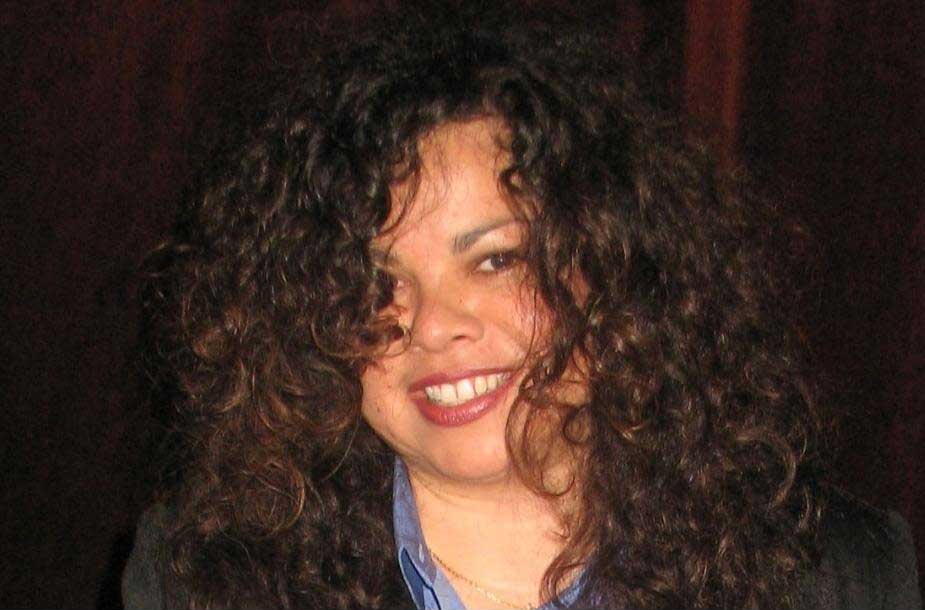School of Music Production & Sound Design for Visual Media instructor Carla Lucero discusses the creation of her newest opera which premieres this weekend
By Caroline Andrade
In a way, music was Carla Lucero’s first language. She began studying piano at the age of four and wrote songs as a child. “I was always composing but not knowing what I was doing, I was just having fun,” said Lucero, who received formal training and was on track to becoming a concert pianist.
As fate would have it, after being admitted to CalArts as a piano major, she felt the urge to study composition. While in her first-year theory courses and she put together her portfolio in secret from her parents. To her surprise, she was selected as a second-year composition major student and was the only woman in her graduating class. Lucero’s journey as a composer began with this “formal switch” and the rest was history.
Today, the Academy of Art University School of Music Production & Sound Design for Visual Media (MUS) instructor has composed her second opera, “Juana,” based on the life and writings of 17th-century Mexican poet, feminist, and nun Sor Juana Inés de la Cruz. Additionally, Lucero is a 2019 recipient of the Opera America Discovery Grant from the Opera Grants for Female Composers program.
“Juana” has already made headlines and was listed as one of the “13 best classical music concerts to see this fall” by the Los Angeles Times. “I’m shocked and thrilled,” said Lucero. “I don’t know how they became aware of the project, but I’m very flattered and excited.”
Lucero began working on the project in 2002 and took part in women’s studies panels and round tables and spoke at book stores to create awareness about who Sor Juana was and what her significance is to literature and to feminism. Lucero shared that she received “a lot of support from the Latina community in San Francisco.”
“[W]omen look at her as a source of strength, almost like a patron saint of feminism in Mexico,” explained Lucero. “She always encouraged the education of girls because she wasn’t allowed to go to school, she was really self-educated and she was a genius. So, it’s a beautiful, dramatic story that really lends itself to opera, and it’s definitely a period piece.”
The two-hour opera is based on “Sor Juana’s Second Dream,” a book written by UCLA professor Alicia Gaspar de Alba, who co-wrote the libretto with Lucero. The project was initially a part of a 2007 workshop led by the duo in San Francisco and was put on hold. “In 2017, I got a call from Alicia saying UCLA is really interested in this project. So, we took the libretto and sat down with one of the foremost librettists, Mark Campbell,” said Lucero. “He helped us make it ready for the stage and the music.” Lucero composed about half of the music for the opera and once the process was complete, she composed and orchestrated the opera over the course of two years.
She finished the orchestration using period instruments, admitting it was her first time working with them. “The vihuela is like a precursor to the guitar and sounds like a mandolin, and it’s the first time I’ve worked with something like that, so I’ve been consulting [with a] master of early string instruments in Spain. I wrote the parts, and now the puzzle is trying to make it readable for that instrument,” explained Lucero, adding, “There’s even ocarina (clay flute), which almost sounds like a hand flute indigenous to Latin America.” For the Spanish side, Lucero shared that she used indigenous percussion instruments such as a classic Spanish guitar and a harpsichord, “which screams baroque music and is during the time of Sor Juana, way before the piano.”
Instruments such as the recorder were prevalent during the baroque period (16th and 17th century) and are also a part of the orchestration, along with a section of string instruments: the violin, viola, cello, and double bass. “The music moves from being really baroque-like to becoming more of what’s in her mind, and what’s happening with these dark forces, so the music starts to twist,” said Lucero. “In the first act, her present-day is centered in baroque music, then it shifts in the second act to more kind of contemporary, more twisted version of baroque as everyone is closing in on her.”
MUS instructor Dirk Epperson was a project manager on “Juana” and oversaw the creation of the printed music score, as well as managed current and former MUS students interning on the project. “Carla is one of the few great artists I have worked with who genuinely cares about the people around her. Opera is a collaborative art and she gets the best of that collaboration by getting people to want to do their best for her,” Epperson wrote via email.
He also reached out to an early string master in Spain who plays the vihuela to help provide additional insight about the instrument. “Carla chose it to help with getting the right cultural flavor. But it turns out that vihuela music is different than anything else in western music notation. We used a consultant in Spain, Pedro Gomez, to help us create the vihuela notation properly,” explained Epperson.
MUS graduate (B.F.A. ’18) and Indonesia native, Oriza Lubis, who served as an assistant and lead intern, shared that she didn’t know opera that much. “I wasn’t exposed to it since my country has never had any opera shows, so working on ‘Juana’ was a really eye-opening experience,” said Lubis. “Carla is amazing at what she does, so I learned so much throughout the entire process. I used the knowledge I gained at the Academy, but also so many new things that go beyond schooling.”
“Juana” premieres Friday, Nov. 22, at the UCLA Herb Alpert School of Music.
